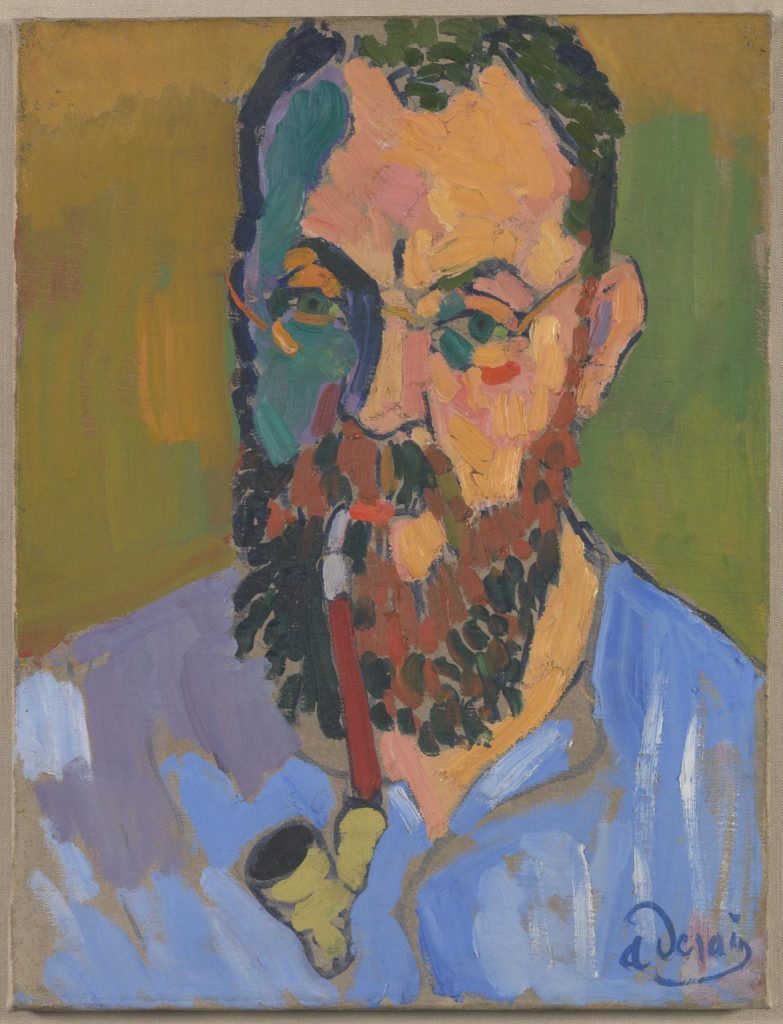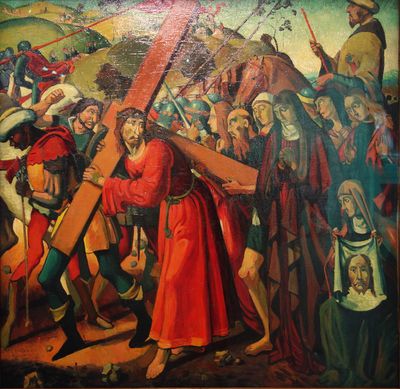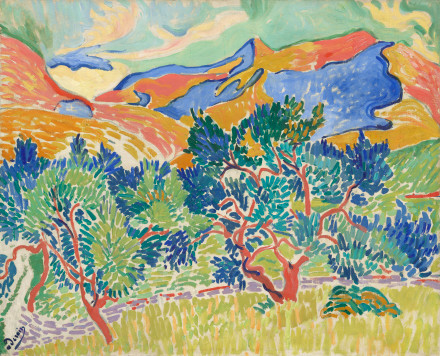Early Life
Born the 17 of June 1880 at Chatou, France, André Derain was eleven years younger than the great fauve painter Matisse. Derain received a formal education at the Sainte-Croix-du-Vésinet institution, then at the Chaptal college in Paris. Derain was, much to the disappointment of his parents, only interested in painting, music, sports and curiosities. He quit college at age 16, with his only outstanding marks being in drawing classes.

Early Work and Philosophy
In 1900, Derain met Maurice de Vlamnick, who would also become a painter. Derain then frequented the Carière Academy and met Matisse, who convinced the boy’s parents to let him explore a career in painting. Inspired by Vlamnick and Matisse, Derain compared colour to dynamite. He thought colour should be thrown onto the canvas by the tube. His portrait of Henri Matisse clearly demonstrates the young artist’s fire and surety. However, while he did use many bright, vibrant colours, he knew when to temper and flatten them according to composition and subject matter.

Unlike his friend Vlamnick, who hated museums, Derain spent long hours at the Louvre where he found ethnic works that deeply inspired him. He had, like many other young painters of his time, a copyist card which allowed him to go work in front of masterpieces in the gallery. He proceeded to transpose in pure tones Le Portement de Croix by Ghirlandaio, using a palette that seemed so violent at the time that he was almost expulsed from the Louvre for “damaging beauty”. However, if we look at Picasso’s later transpositions of Velazquez’s Meninas and Manet’s Luncheon, Derain’s modifications to Ghirlandaio’s work seem almost muted in comparison.

Growth and Change
This exercised restraint was consistent behaviour for Derain. Right from his beginnings as a artist, he had manifested a sort of indecision between his instincts and his culture. Unlike Matisse, he didn’t strive, or wasn’t able, to synthesize the two. Even in the midst of his fauvist period, Derain couldn’t separate himself from the marked taste he had for classic composition. In 1908, this predicament brought him closer to cubist stylization. Later, in 1925, he became one of the principal initiators of the Return to Order, which was a post WW1 movement that rejected the extreme avant-garde art of the years up to 1918 and took its inspiration from traditional art instead.

Derain passed the 10th of September in an accident, only weeks before Matisse’s disappearance.


Cited:
Jean-Louis-Ferier, Les Fauves: Le règne de la couleur, 1992.
Wikipedia: André Derain: https://en.wikipedia.org/wiki/Andr%C3%A9_Derain
Wikipedia, Return to Order: https://en.wikipedia.org/wiki/Return_to_order
Tate Museum, André Derain: https://www.tate.org.uk/art/artworks/derain-henri-matisse-t00165